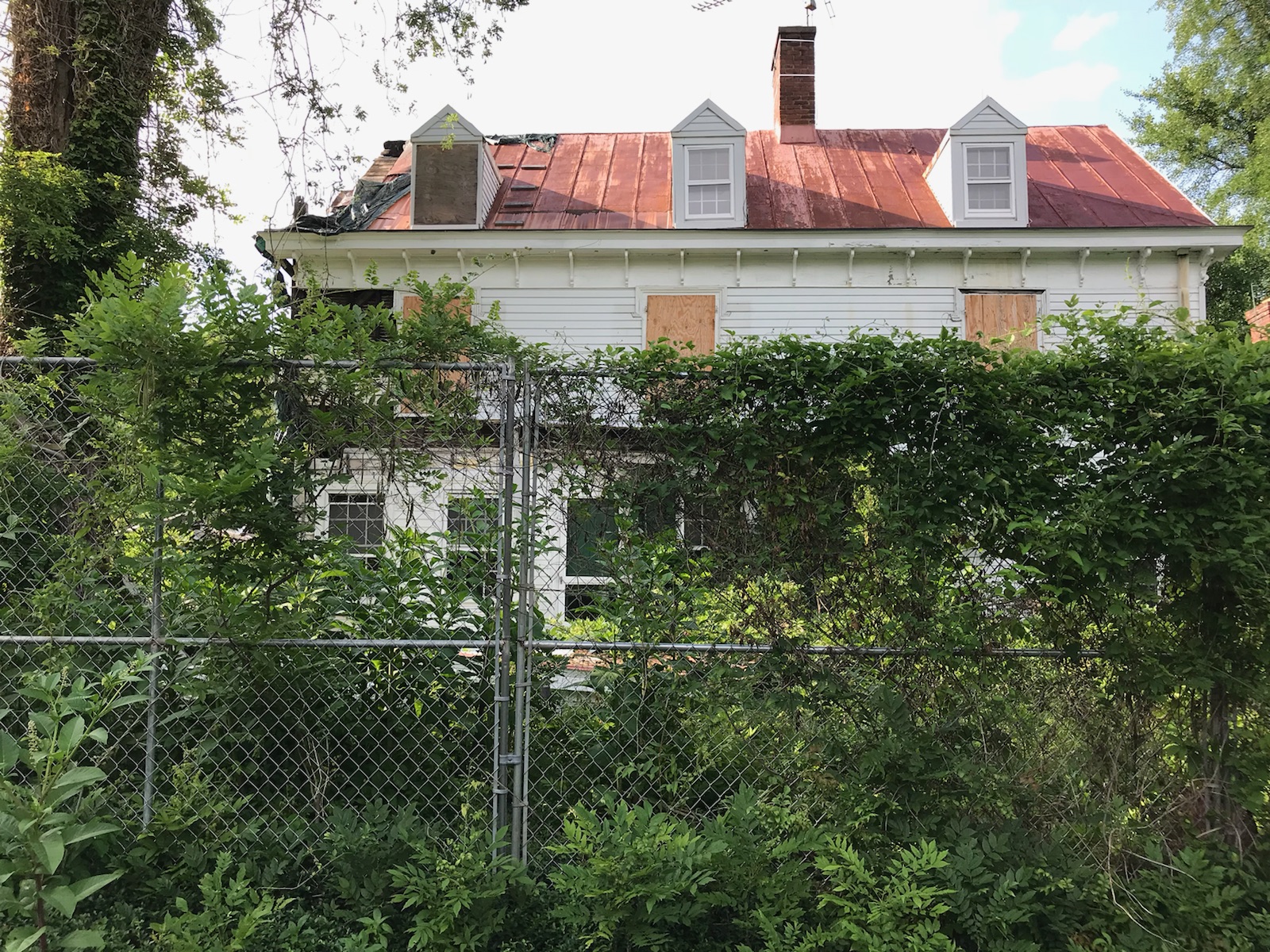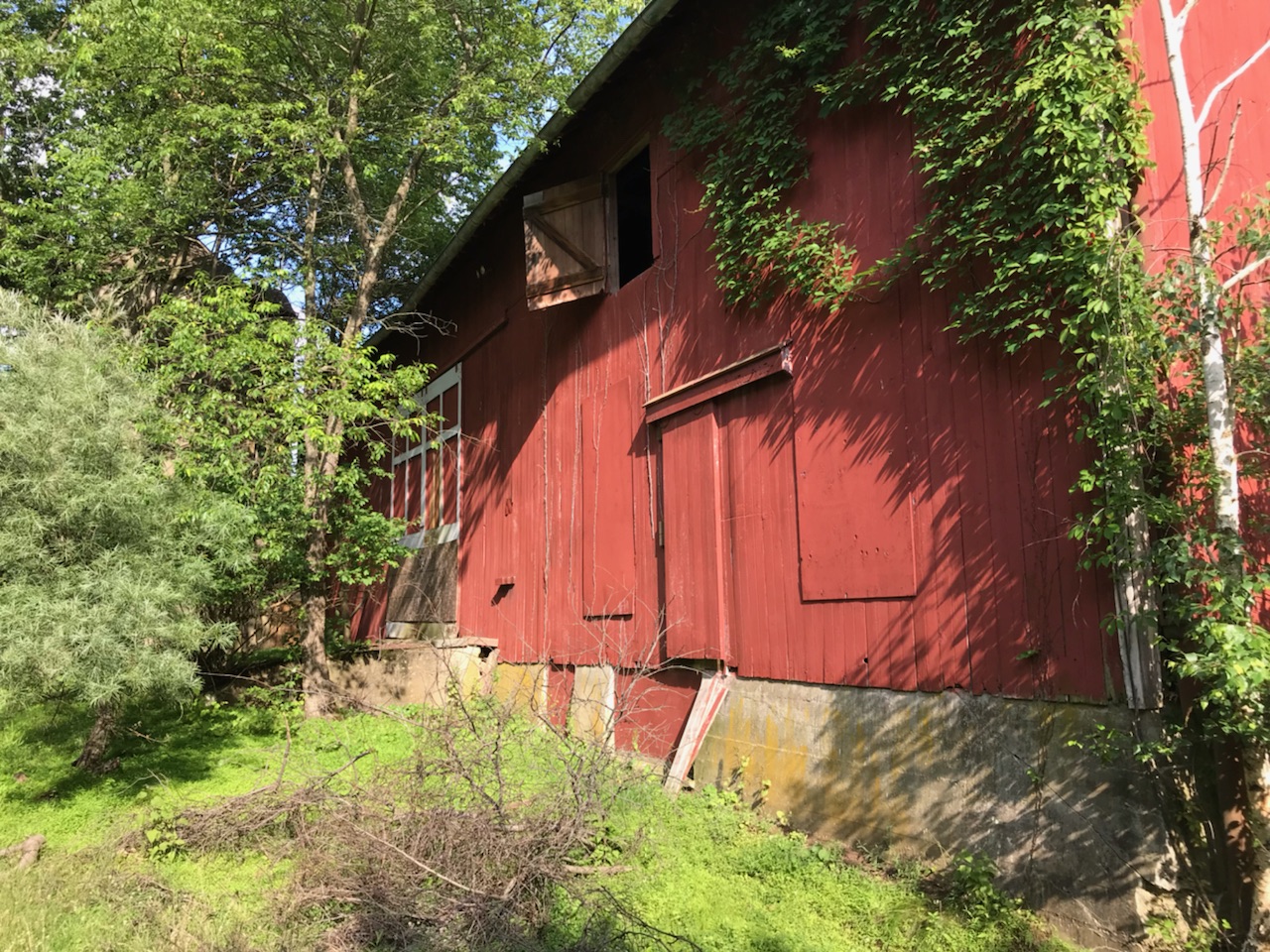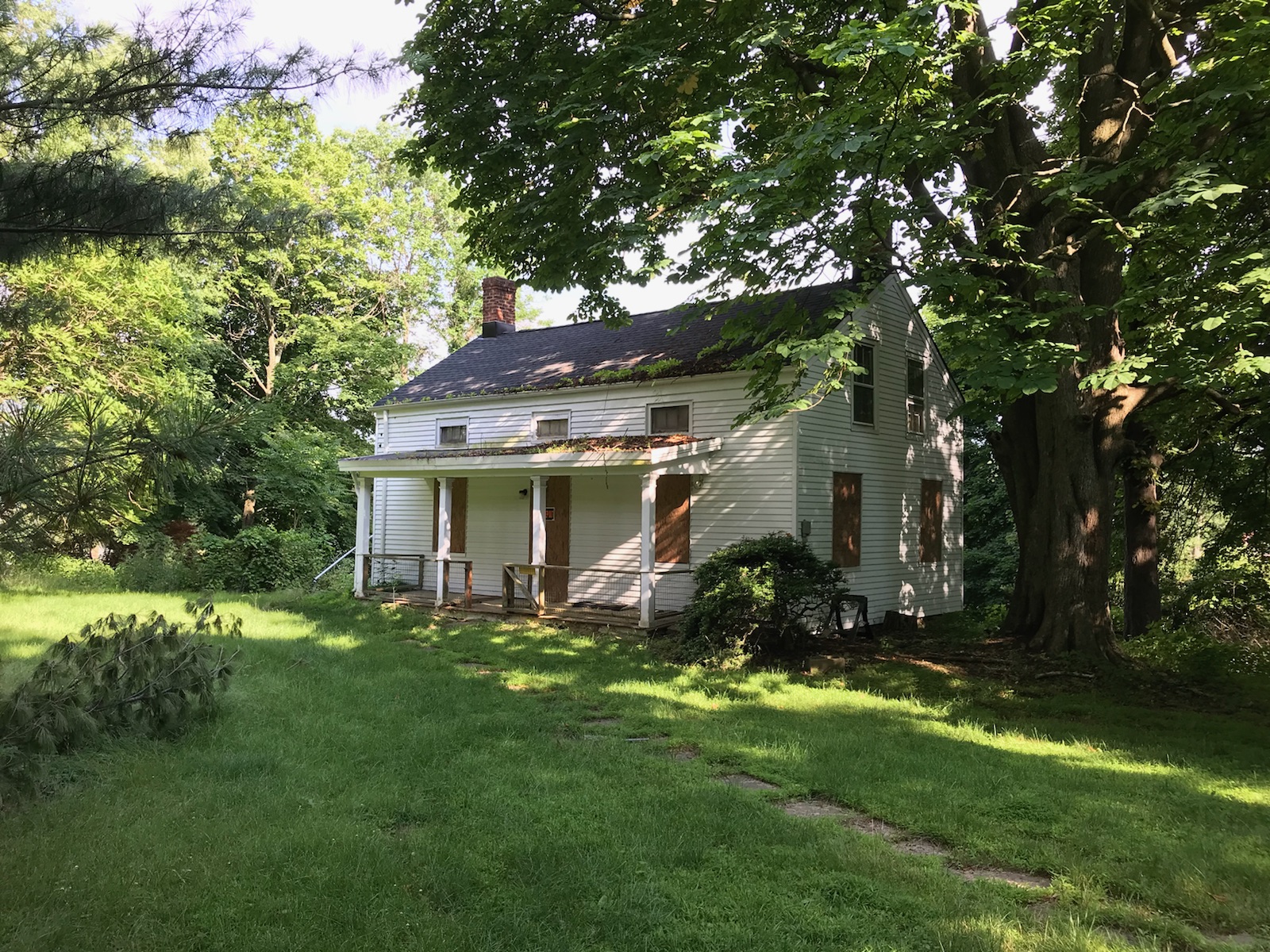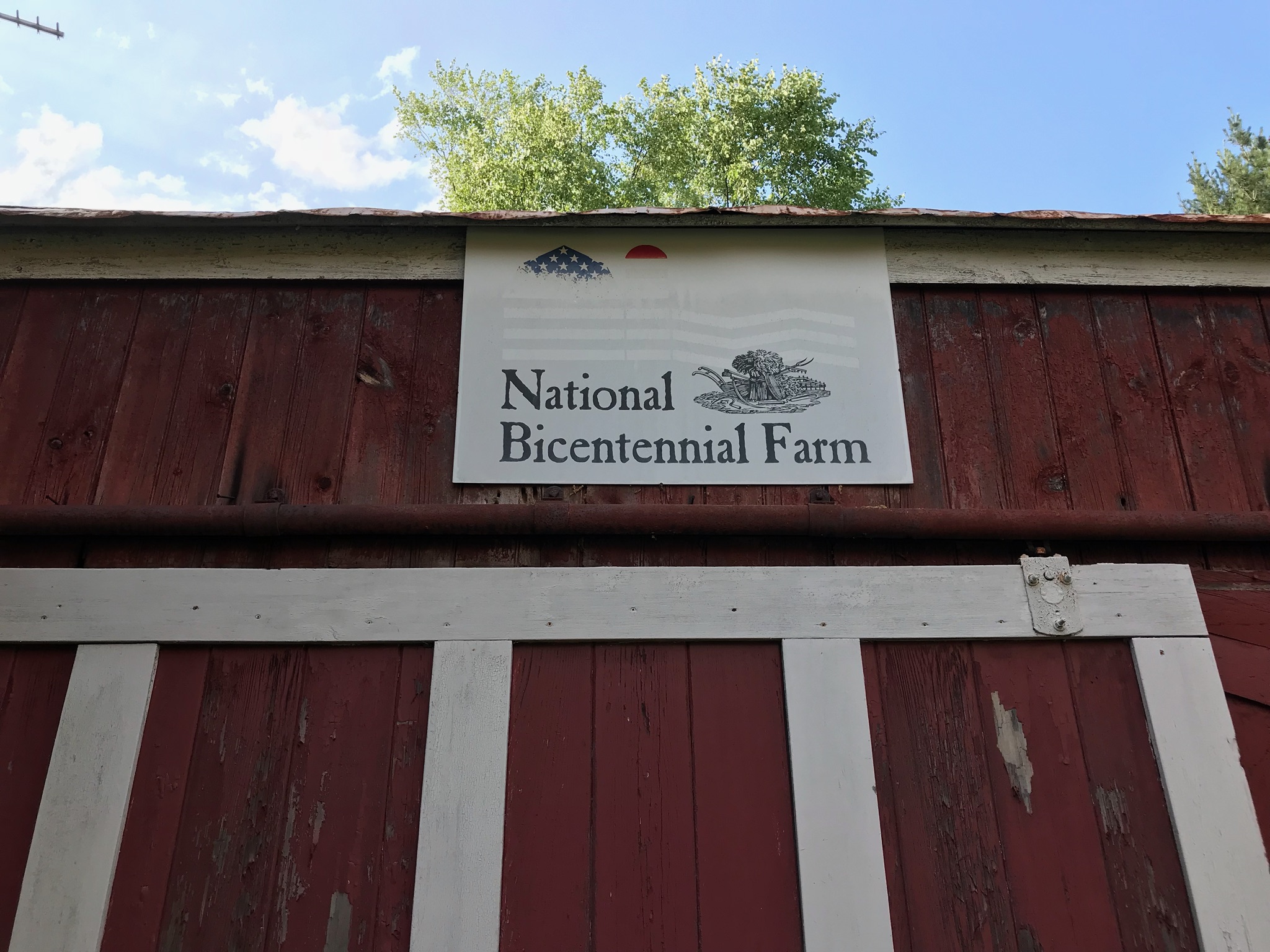History Is Alive But We Have To Have The Courage To Keep Looking For It

Before the fire; Photo credit: Debbie Hennelly
Of all our holidays July 4th is the one most directly linked to how we frame the American story. On this singular day we revere that history and plant flags to remember. But what about the rest of the year?
Here in the United States when we see the likes of ISIS or the Taliban destroy an historic site we call them barbaric. Yet, here in New Jersey it has been my experience that when we destroy historic sites we just call it commerce.
We all have read the local headlines. ‘Historic home catches fire in mysterious blaze’ or ‘bulldozers level landmark.’ Lost to us for the ages the artifacts of those who came before us engaged in all manner of human endeavor, the evil, the mundane and the heroic.
On special occasions like the Fourth of July we celebrate our proximity to history, especially when it has become memorialized by rote into a reassuring tradition that rationalizes our own self-regard. At that point history is co-opted into ancestor worship. When we lose the thread of history as open inquiry we foreclose on self-improvement assuming we were greatest back when.
I pray we have yet to be our greatest.
Here in Mendham Township, this time of year especially, the town prides itself in being so near Morristown, where General George Washington and his army found a strategic sanctuary in the winters of 1777 and in 1779-1780. It was here that troops from the Continental Army found supplies to get through what was considered the coldest winter of the 18th century.
It was at the site of the modern day Hilltop Church that an infirmary for the Continental Army was set up and twenty-seven unknown American patriots took their last breath, before succumbing to small pox. They are buried there in a mass grave.
Less than a mile from the mass grave of Washington’s troops is the Pitney Farm, which back in 1976 was feted as one of a few of America’s Bi-Centennial farms that had remained in cultivation since the American Revolution.
From at least 1760, until 2009 when Mendham Township purchased it, the Pitney family owned the estate which contracted and expanded with the fortunes of the Pitney’s ten generations linked to that land. At its zenith, the property consisted of several hundred acres and included a vegetable and dairy farm, orchards, a distillery and an iron forge.
So singularly productive was the farm that it merited its own stop on the Rockaway Railroad, which has long since receded into the landscape.
In New Jersey, where sprawl has leveled one historic site after another, while destroying hundreds of thousands of acres of farmland, having that kind of unbroken familial continuity on a site is extraordinarily rare. Imagine an unbroken chain of custody that stretched from the time when whites first arrived in New Jersey to the current day.
In the 20th century the estate’s formal gardens and 250 year old maple tree allee were archived in the files of the American Gardens at the Smithsonian Institution. A Pitney family monograph published in 1925 described that over the years their ploughing up the fields regularly churned up Native-American artifacts which they put on display “in a cabinet in the front room.”
Pitney was unique enough to be deemed eligible by the New Jersey DEP’s Historic Preservation Office the New Jersey and National Registers of Historic Places. But it was not to be. There was insufficient local interest in exploring what Pitney could tell us about our history that time and our ignorance has wiped from our collective memory.
The 2009 $4,000,000 municipal purchase, which included some support from Morris County, did not stand the test of time politically. Cost conscious taxpayers were opposed to plans to build a new library or move the local government offices to the Pitney Farm, out of their existing Brookside location. Voters shuffled the ranks of the Township Committee, electing members who saw the 2009 as an expensive blunder.
Friends of Pitney Farm, a local non-profit committed to the preservation of the site, worked to build support in the community but ran into neighborhood opposition from local residents who were concerned about the additional traffic that would be generated.
As a consequence the non-profit could not get traction with the Township Committee either, which now saw the estate as a liability. Eventually, the local government boarded up the mansion and cut the electrical power to the building. It was now on that passive New Jersey conveyor belt of neglect that we use to dispose of historic sites where we let gravity do what we don’t want to do overtly with a wrecking ball likethe Taliban or ISIS.
Every year Preservation New Jersey, a non-profit that promotes historic preservation, publishes its ten most endangered places list of what it describes as “irreplaceable historic, architectural, cultural and archeological resources in New Jersey that are in imminent danger of being lost.”
Sadly, making the list, which is generated by nominations made by the general public, is no guarantee of a happy ending. In 2015, Mendham Township’s Pitney Farm, a pre-Revolutionary farmstead made the list.
“The twelve-acre Pitney Farm is an excellent example of an eighteenth-century farmstead,” according to the non-profit. “The complex contains a Federal-style farmhouse with later additions, three barns, two cottages, an ice house, and several gardens.”
In the early morning hours of February 24, 2016 an arson fire destroyed most of the main manor house. No suspect was ever apprehended. The Township collected $1.5 million in insurance proceeds from the fire.
[caption id="attachment_33236" align="alignnone" width="1600"] After the fire; Photo Credit: Bob Hennelly[/caption]
After the fire; Photo Credit: Bob Hennelly[/caption]
Currently, the Township Committee is soliciting bids for the demolition of what remains of the main house, the barn and other out buildings. The site includes a farmer’s cottage from between 1820 to 1840.
As we celebrate our independence it might be worthwhile to use the Pitney Farm as a prism of place through which we can glean some insights into aspects of our own history like slavery we have yet to own.
[caption id="attachment_33239" align="alignnone" width="1280"] Demolition any day? Photo Credit: Bob Hennelly[/caption]
Demolition any day? Photo Credit: Bob Hennelly[/caption]
There was no mention of this ‘underside’ of this history in any of the local literature hyping the preservation of Pitney Farm or even in the municipal documents that were part of the town’s due diligence when it purchased the homestead.
There’s no marking to note that slaves were part of the life of this place -- although I would come to learn that they were, throughout all of Morris County and across the entire state of New Jersey, from its earliest white settlement, up until the end of the Civil War.
Back in 2008, before it moved to buy the property, Mendham Township received a report from the Cultural Resource Consulting Group, which cataloged what is known about the historical significance of the site. The seven-page report highlighted the accomplishments of the Pitney family, which can trace its roots back to the 1720s in the area.
Prominently placed are the references to Mahlon Pitney, who fought alongside George Washington at the Battle of Long Island in 1776. Another Mahlon Pitney served two terms in Congress and was nominated by President Howard Taft to serve on the United States Supreme Court. From the CRCG report, we know the farm grew to encompass more than 700 acres and included a dairy operation. But the slaves were invisible in this analysis.
The CRCG analysis concludes that the Pitney site has a multilayered historical significance because the 12-acre farmstead “demonstrates the evolution of the multi-generational homestead of an important and influential family that traces its roots to the Revolution” and “distinguished themselves in the area of local, state and Federal law.” But as for the day-to-day life on the colonial farm that laid the foundation for the family’s commercial and civic achievements, not much is known the study maintained.
“Little information was uncovered concerning the family’s farming activities during the mid to early 18th century,” according to the CRCG report prepared by Gregory Dietrich, senior architectural historian. The document makes no reference to the well-documented role of slavery at the Pitney Farms.
There are, however, multiple extant historical records available online and in the county library that offer a fuller image of just how much Mendham, and indeed our entire state, was reliant on, and enmeshed in, the day-to-day brutality of slavery.
My first break came while looking in a Rutgers index for old court records online. I found that, in May of 1793, in the case “of Negro James, a Boy about Thirteen Years of age, claiming his freedom,” New Jersey’s Supreme Court ordered that James Pitney, listed as the defendant, “discharge” the black teen from “illegal detention.”
[caption id="attachment_33238" align="alignnone" width="1600"] Could slaves have live there? Photo Credit: Bob Hennelly[/caption]
Could slaves have live there? Photo Credit: Bob Hennelly[/caption]
According to the history of the case, as recounted in the court order, three years earlier Pitney bought the African-American boy from relatives of Jasper Smith, of Hunterdon County. Smith died in 1769, but in his will called for the freeing of “all my negroes,” including “Negro Juddy,” the mother of the boy now in Pitney’s possession. (Evidently Smith’s heirs had other ideas.)
The order continues: “The Court having taken due consideration, are unanimously of Opinion, that the said Negro Juddy” was “a free woman by the Will of the said Jasper Smith,” which in turn meant that Juddy’s son James was, as the state’s highest court saw it, “entitled to his freedom.”
As brutal as the slave codes were, there was some effort in New Jersey to regulate potential abuses by the slave masters. In December of 1808, Mahlon Pitney, James’ son, was the foreman on a Morris County jury of 12 men that convicted Abraham Cooper of Chester for using a hot iron to brand the forehead of his slave Cato.
The jury ruled Cato was “there by grievously wounded and hurt” and was put “to great pain, torture and other wrong” and fined Cooper $40, recounts David Mitros, in his "Slave Records of Morris County, NJ (1756-1841)."
Four years after that, Mahlon Pitney registered with Morris County the birth of a female slave child named Peg born on Sept. 20, 1810, in Mendham to “my negro slave named Rachel” to comply with New Jersey’s Gradual Abolition Act of 1804.
That act mandated that children born to slaves born after July 4, 1804, would eventually be granted their freedom -- for boys only after they served for 25 years as slaves to their mother’s master; for females the age was set at 21.
Of course, the structure of the Gradual Abolition Act of 1804 required that thousands of African-American women would give birth to children that would start their lives as slaves. It also had a provision for slave owners to “abandon” these children a year after their birth to the “county poorhouse,” where they would be declared a pauper and “bound out” as indentured servants to the highest bidder by the overseers of the poor “in the same manner as other poor children.”
“Some slave owners took full advantage of the law,” writes Mitros. “They abandoned the slave children, then bid them back to receive the state subsidy” for maintaining these “paupers,” which got them $3 a month for their maintenance from the state treasury. Eventually this self-serving practice was ended in 1811, because it was consuming too much of the state’s revenue.
On this Independence Day I will be thinking of just what a unique and amazing young man thirteen year-old James must have been to claim his freedom from his masters. The Lord knows he was a half-century ahead of his time.
History is a alive but we have to have the courage to keep looking for it. Surely, an archaeological dig is in order.
[caption id="attachment_33240" align="alignnone" width="2048"] But not another century; Photo Credit: Bob Hennelly[/caption]
But not another century; Photo Credit: Bob Hennelly[/caption]





